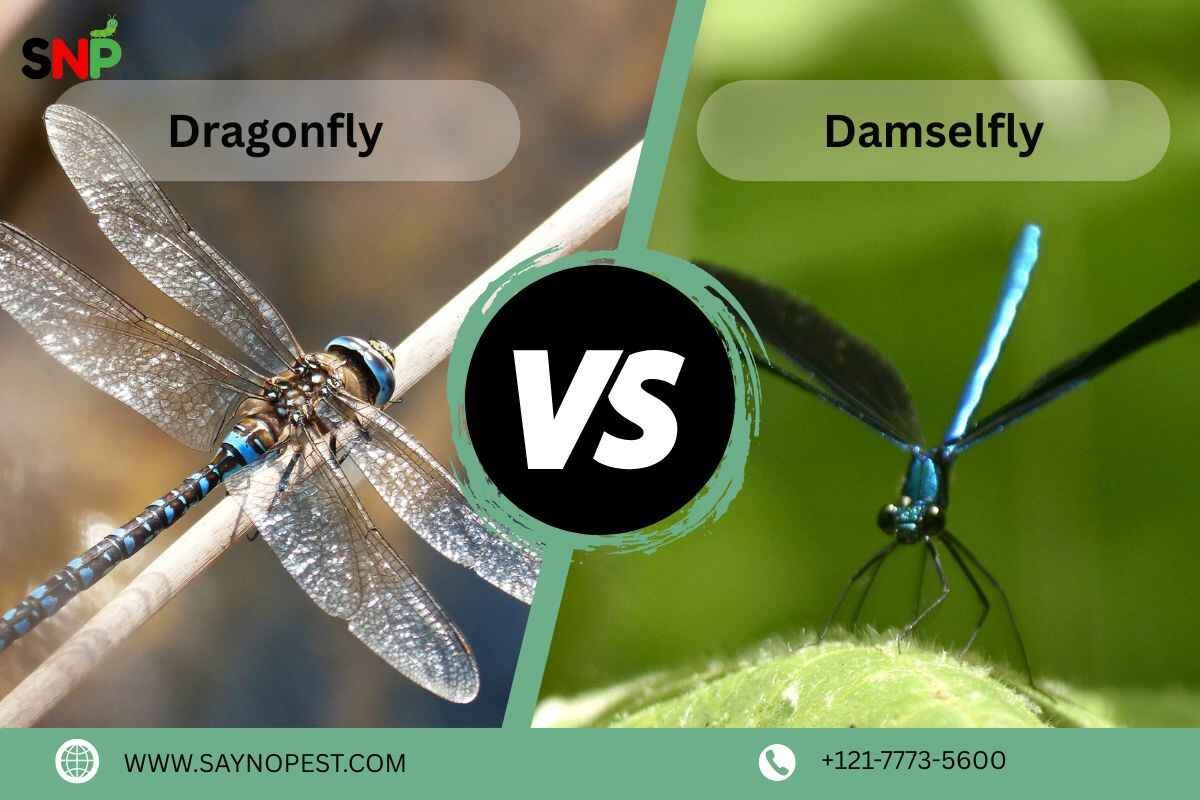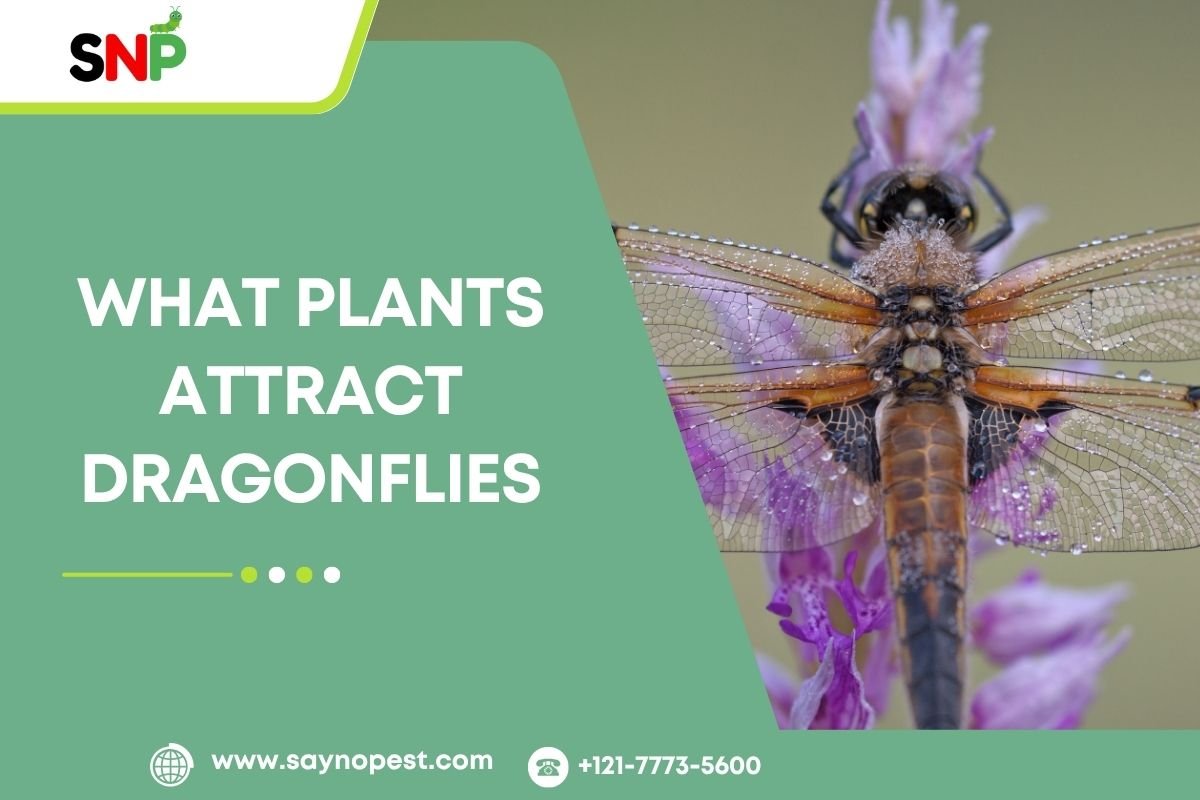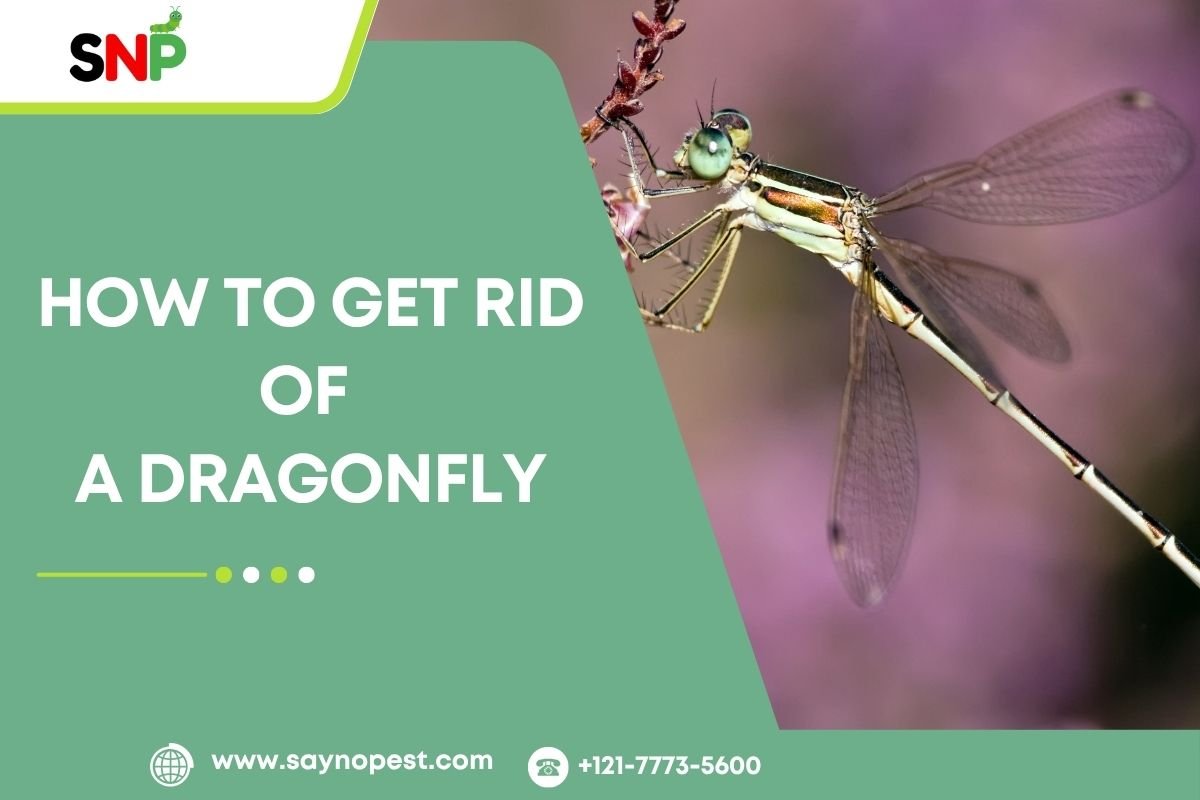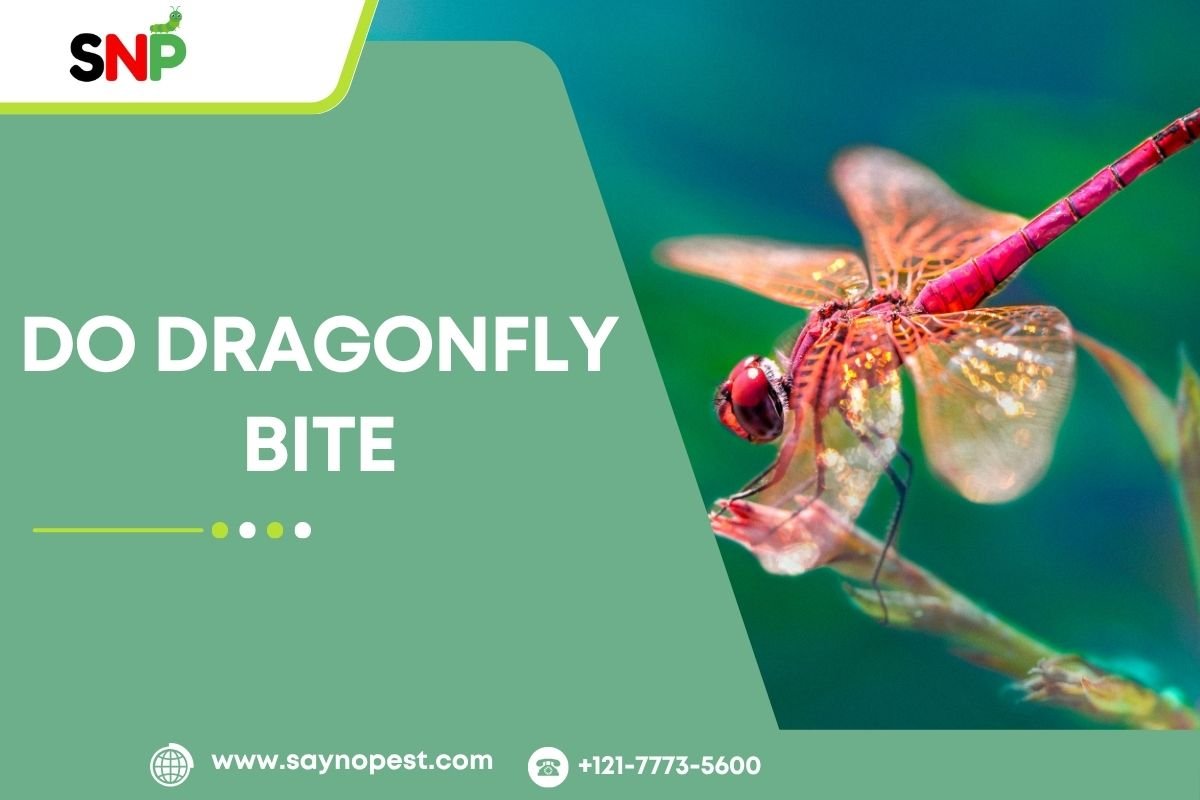Few insects near water are as interesting, and not as easily recognisable, as damselflies and dragonflies. If you’ve wanted to know the differences between the two, then you’re not the only one. This post is dedicate to the topic of damselfly vs dragonfly; here we will take a careful look at both through their features, food, habitat, behaviour, and more. Whether you are a fan of nature, a professional who deals with pests, or just curious, got yourself the means here to differentiate between these two kinds of insects.
Comparing Damselfly vs Dragonfly

Appearance
Of all the factors considered in the comparison of damselfly vs dragonfly, the most remarkable one is their appearance. By nature, dragonflies are bigger and stouter and have a bulkier body and wide open wings that resemble those of an aeroplane during their resting time. Their eyes are huge and usually meet at the top of the head, thus giving them almost 360-degree vision. On the other hand, when we refer to the Damselfly, it is a different story. They are not only thin and light but also smaller, and have wings that hold over the body when at rest, and a pair of eyes that stand alone on the same level but on either side of the head of the insect. In other words, they are quite reminiscent of an aircraft that holds its wings over the body.
Diet
Diet-wise, both damselflies and dragonflies feed on any kind of insect aggressively, which makes them the best friends of the farmers. Their nutrition comes mainly from mosquitoes, midges, and other small insects during their growth period, as well as plenty of adult ones. The dragonfly is a great interceptor in the sky, its strong legs enable them to catch insects on the wing, while the manner of the damselfly attack is more likely to ambush from a plant stem than anything else.
Habitat
Most damselflies and dragonflies can found in places near clean water, which can be ponds, rivers, lakes, or marshes. While larvae or nymphs are aquatic, the water they need to live in should be clean. They prefer things to be orderly, and they do their best to keep their living spaces free from messes.
Behavior
Dragonfly can fly as fast as compare to other insects. Their speed is 25 miles per hour. So they are the fastest. With the help of their strong chest, they can float, zip around, and go far when required this is one of the dragonfly facts that many do not know. In contrast, damselflies fly with a slight flutter, and they usually keep close to the vegetation, sometimes even moving slower and more gracefully. Both types of insects, whose populations do the natural control of the pest situation as the water becomes of much better quality, are of great significance for the environment.
Dragonfly & Damselfly Larvae

Understanding dragonfly & damselfly larvae is important for everyone so that they can identify them easily. Although both come into being in water, they stay alive and grow in different ways that are easily differentiat both physically and behaviorally.
- Damselfly larvae have a lengthy and thin body, and the abdomen is armed with three leaf-like external gills. The gills are easily seen, and they not only facilitate swimming but also can be used to breathe. The nature of the damselfly larvae’s movement is very serpentine, and they are usually found attached to aquatic plants.
- Dragonfly larvae have a longer and more muscular body, and there are internal gills present in the rectum. The aquatic larvae are capable of getting food through respiration cause by the inhalation and exhalation of water out of their hind end, and also are able to perform jet propulsion to avoid predators. The respiration of dragonfly larvae is different from damselfly larvae because they have no external gills and they usually roost in the silt or under a shelter made of debris.
Larvae of both types are predators and they feed on other water insects, small fishes, and tadpoles, serving as a biological control agent by dwindling pest populations naturally.
Pros and cons of damselfly vs dragonfly
Damselfly (Zygoptera)
Pros:
- Dainty bodies are less likely to scare away people and be of serious character, thus making them helpful to individuals.
- These small beings are masters when it comes to staying afloat and are often seen fluttering over plants.
- Little flying insects show the skill of an assassin by catching and consuming them as if they were their prey.
- Their larvae, which are leaf-clinging and have visible tails, enable them to achieve their respiratory function using gills that are outside their bodies.
- The role of being beautiful and the promoter of nature’s wealth by filling your garden and water body with flowers can be seen in them.
- Moderately tolerant of pollution, can survive in a variety of water conditions.
Cons:
- These wobbly, slow movers are easy targets for potential enemies.
- They bring down twice as much prey as dragonflies, which a nursery crop protection entomological consultant can confirm.
- The livelihood of the species can severely affected by the loss of their habitat and the pollution of water bodies.

Dragonfly (Anisoptera)
Pros:
- Strong and agile bodies facilitate quick and nimble flight.
- Conditions of poor visibility do not deter these skilled predators from catching prey while they are in flight, including insects of significant size.
- This method is particularly good for controlling the number of mosquitoes without using chemicals.
- The larvae are provided with internal gills and have a clever way of escaping their predators by means of jet propulsion.
- They are reliable in the detection of the good health of water ecosystems.
- A few types of these insects can survive in all kinds of water.
Cons:
- A few species are vulnerable to pollution and changes to their habitat.
- Apart from rare cases when large populations cause a small interference, the species is a pure advantage.
- The bigger the breeding and survival water bodies are, the better.
Conclusion: Damselfly vs Dragonfly in Pest Control
The damselfly vs dragonfly argument reveals the most effective as well as very good-looking pest killers in the world of insects. They are not only occurring in the same places at the same time, and are of the same size, but also, a distinctive shape, behaviour, and, if still in a larval form, can make the identification process of the species relatively straightforward. The question left is whether the damselfly larvae and the dragonfly larvae will still have to stay in the water to secure their ecosystem, or the adults are going to do the job of a natural pest control agent.
For pest control businesses and environmentally friendly homeowners, both damselflies and dragonflies are beneficial as they can give you a natural pest management solution without using chemicals. By knowing the dragonfly characteristics and recognising the differences, you will become more efficient nature protectors and more actively involved in the ecosystem around your home or business.
Thus, if you notice a sleek, hovering damselfly or a mighty, darting dragonfly next time, be reminded that both are your helpers in the long-standing struggle against pests, and both are also the miracles of the natural world.










